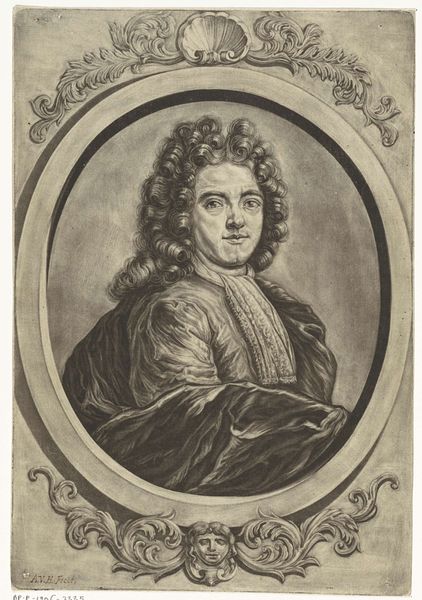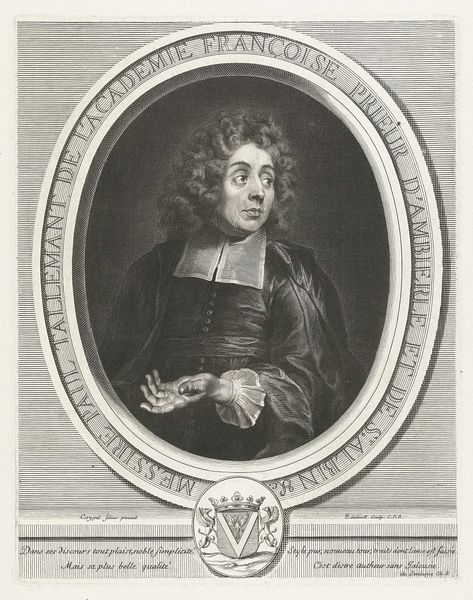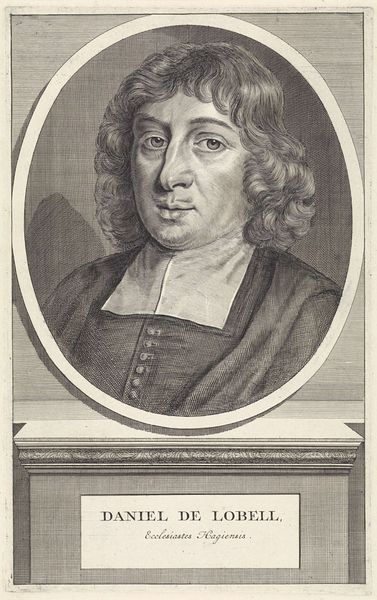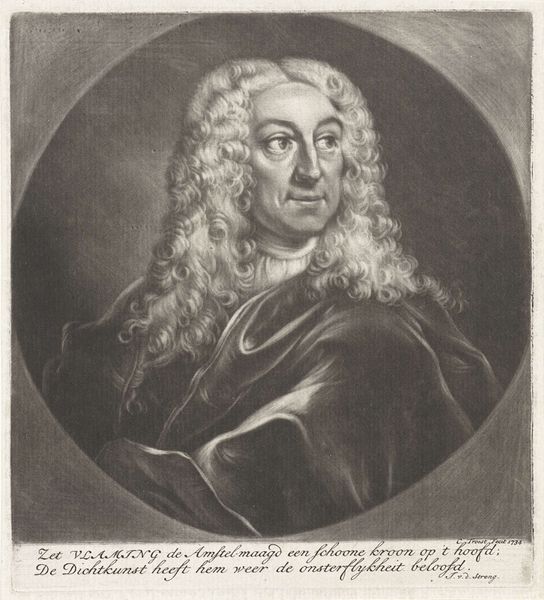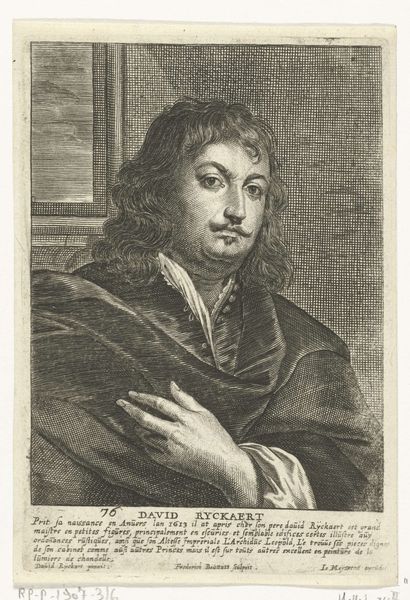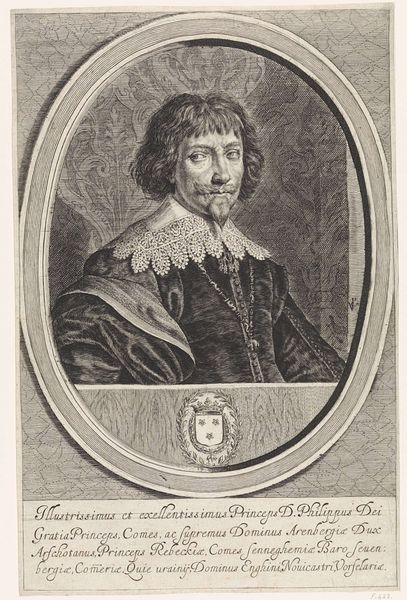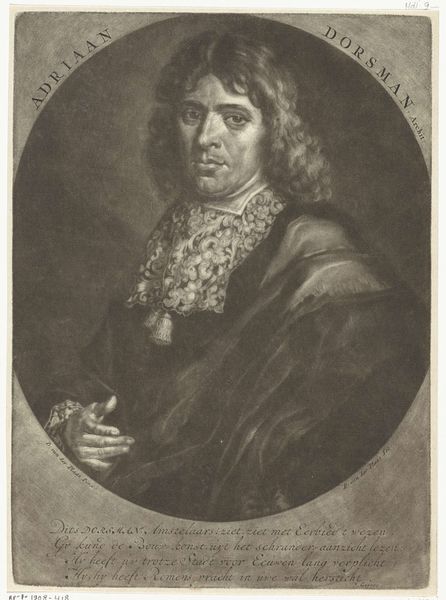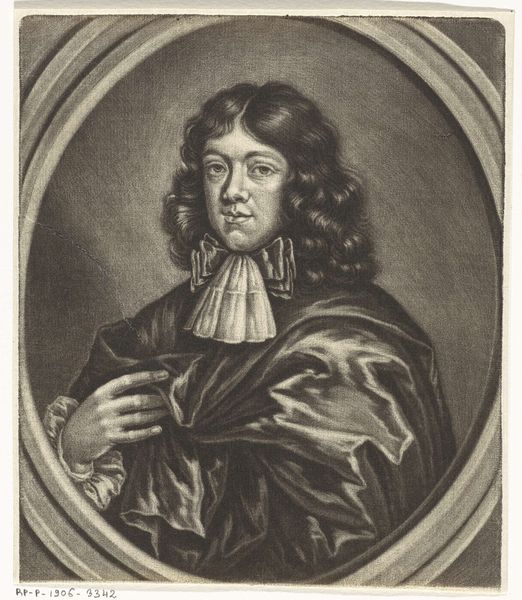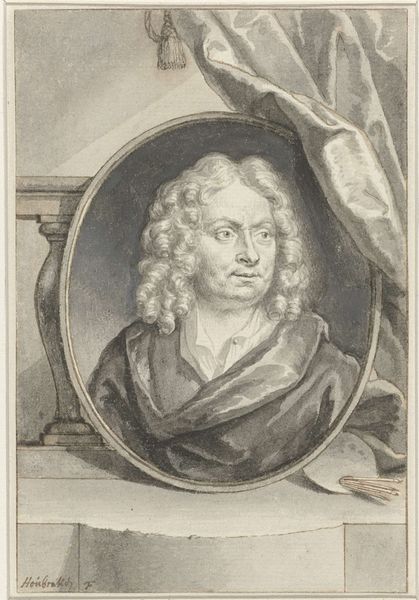
engraving
#
portrait
#
baroque
#
dutch-golden-age
#
figuration
#
line
#
engraving
Dimensions: height 279 mm, width 207 mm
Copyright: Rijks Museum: Open Domain
Curator: This work is a print from 1692, titled "Portret van Petrus Harmans". The engraving is by Jan van Somer, after an image by Bartholomeus van der Helst. Editor: My initial reaction is one of intrigue. The contrasting values create such a luminous effect, almost pulling you into the sitter’s contemplative gaze. There's an ethereal quality despite its material earthiness. Curator: The details characteristic of the Dutch Golden Age, wouldn't you say? Consider how the proliferation of portraits during this era reflected the rise of a wealthy merchant class eager to immortalize their status. Harmans, as an art lover, may have wanted to project this same air of importance. Editor: Yes, the sitter’s attire and bearing certainly communicate an established place in society. But look more closely at the hand – almost reaching out. It is open and the linear rendering suggests an expressive invitation. Curator: In that era, posing one's hand towards the viewer was commonly accepted as rhetorical and inviting. But more than that, the material, engraving, facilitates that expressiveness. You can observe a myriad of fine lines that come together, contributing to a captivating sense of chiaroscuro and volumetric space. Editor: The technical mastery of line, light, and shadow here is undeniably impressive. But the artist is clearly elevating Harmans' perceived social position and even inner depth using Baroque theatricality. The portrait plays a role beyond likeness. Curator: Agreed. It performs status. And yet, by placing focus on a single figure, its expressivity and the finery that represents material wealth are flattened into this single visual plane. We look through this object in time to understand Harmans, but the artwork’s ability to perform has been frozen into a symbol. Editor: And perhaps that’s the most intriguing quality of all, capturing that duality of symbolism—how personal identity merges into performance. The artwork now a historical relic as well as testament to one man. Curator: A fitting testament indeed, which invites viewers today to meditate on the layers that are ingrained into art and our perception.
Comments
No comments
Be the first to comment and join the conversation on the ultimate creative platform.

